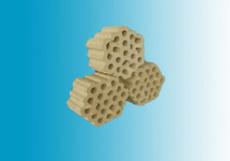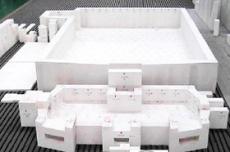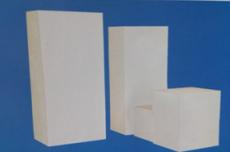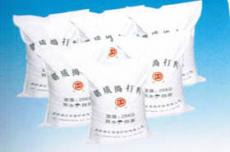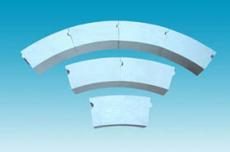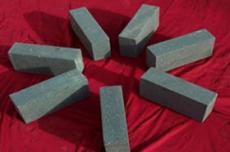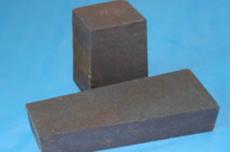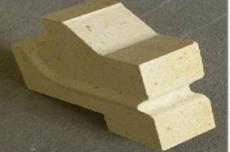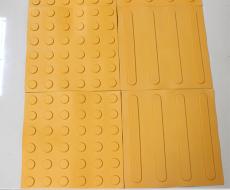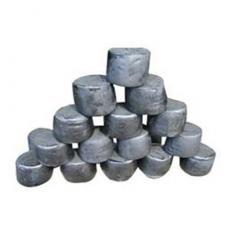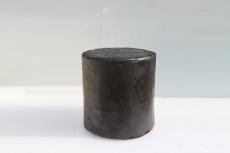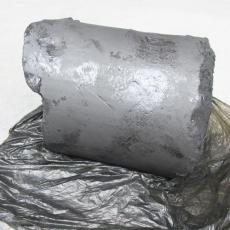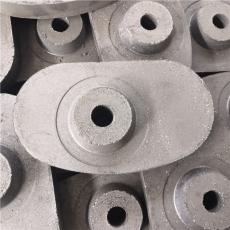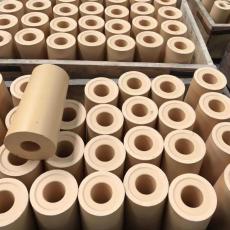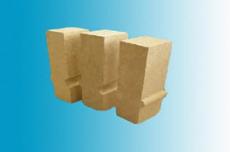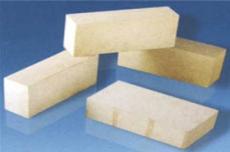
I. Importance of refractory materials for lime kilns
Refractory materials not only enable production equipment to operate continuously in high temperature environments, but also can reduce heat loss to a certain extent, improve production efficiency, ensure production safety, and reduce production costs. In a lime kiln, the performance of refractory materials directly affects the service life and production efficiency of the lime kiln. For example, good refractory materials can withstand high temperatures, chemical erosion and mechanical wear, thereby extending the service life of the lime kiln.
II. Common types of refractory materials for lime kilns Magnesium refractory bricks:
The magnesia refractory bricks used in the general sleeve lime kiln burners in China have the disadvantage that their service life is only one year. They are often prone to fracture problems within more than one year of use and must be replaced, making the service life of the burner bricks out of sync with the life of the kiln body.
Magnesium-aluminum spinel bricks: A new type of magnesium-aluminum-zirconium composite bricks have been developed by introducing an appropriate amount of zirconium source into magnesium-aluminum spinel bricks and modifying magnesium-aluminum spinel bricks with zirconium oxide. The product has the advantages of low impurity content, low porosity, high bulk density, high load softening temperature and high temperature strength, and excellent thermal shock resistance. Among them, zirconium oxide is distributed in the form of point crystals between magnesia sand and spinel particles, which can play a comprehensive role in improving the thermal shock stability, high temperature corrosion resistance, high temperature toughness and wear resistance of the material. Magnesium aluminum zirconium composite bricks can replace high-purity magnesium bricks and magnesium aluminum spinel bricks and be used in the arch bridge area of sleeve lime kiln to extend the service life of the kiln.
3. Damage mechanism of refractory materials for lime kilns Wear:
Refractory materials for lime kilns will be worn by materials during use, especially in the combustion area, where the flow rate of materials is fast and the wear is more serious.
Collapse: The supporting arch bricks for sleeve lime kilns are prone to collapse during use, especially the collapse of the arch bridge has become the main reason affecting the service life of the sleeve kiln.
Falling off: The thermal insulation material of the lime kiln has been put into production for about 5 years. Due to severe wear, the inner layer of refractory bricks in the impact area of the material discharge began to fall off frequently.
Thermal shock: Refractory materials are subject to rapid changes in temperature during the use of lime kilns, which are prone to thermal shock damage.
Chemical erosion: Refractory corrosion occurs when molten fuel ash penetrates into refractory materials through pores and small cracks. For example, the ash content and properties of biomass fuels may cause problems for the lining materials of lime kilns. Potassium-rich olive dregs ash is more likely to penetrate than silicon-rich coal ash, which forms a glassy molten layer on the top of refractory samples. The ash mainly penetrates through the porous matrix and grain boundaries of the refractory, and refractory phases are observed in both types of ash, indicating the migration of refractory components.
IV. Methods to extend the service life of lime kiln refractory materials Select suitable refractory materials: According to the use conditions and requirements of the lime kiln, select refractory materials with good performance. For example, for the arch bridge area of the sleeve lime kiln, magnesium-aluminum-zirconium composite bricks can be selected to increase the service life of the refractory materials.
Optimization design: Optimize the structure of the lime kiln to reduce the wear and collapse of the refractory materials. For example, in response to the phenomenon that the burners of sleeve kilns used in China are prone to breakage, the cause was analyzed, and the material and shape of the burners suitable for sleeve kilns were re-studied and designed based on the combustion process of the lime kiln calcining zone and the structure of the lining refractory. The design results were applied on site, and the service life of the new burner bricks also reached 3-5 years, which was synchronized with the life of the kiln body, achieving ideal results.
Strengthen maintenance: Regularly inspect and maintain the lime kiln to promptly detect and deal with damage to refractory materials. For example, frequent thermal imaging inspections combined with design modifications can help prevent sudden and premature failure of the lime kiln.
Adopt innovative maintenance methods: Adopt innovative maintenance methods to increase the service life of refractory materials. For example, a steel plant adopted several innovative maintenance methods, introduced design changes and applied high-quality materials, which greatly increased the service life of the lime kiln. These interventions reduced the overall downtime of the kiln, thereby improving the quality of calcined lime and the productivity of steel production.
5. Requirements for refractory materials in different types of lime kilns Sleeve lime kiln: The supporting arch bricks for sleeve lime kilns are prone to wear, collapse, and fall off during use. New refractory materials need to be developed to extend the service life of the kiln. For example, magnesium-aluminum-zirconium composite bricks can replace high-purity magnesium bricks and magnesium-aluminum spinel bricks for use in the arch bridge area of sleeve lime kilns.
Double-chamber lime kiln: Combining the composition of the refractory lining of the double-chamber lime kiln and the problems that often occur in the application of the lining in recent years, the reasons for the frequent damage of the lining in the preheating zone, calcining zone and cooling zone are summarized. After comparative analysis of actual production conditions and kiln structure, targeted optimization plans are proposed.
The selection, design, maintenance and repair of refractory materials for lime kilns are crucial to extending the service life of lime kilns and improving production efficiency. When selecting refractory materials, it is necessary to consider the use conditions and requirements of the lime kiln and select refractory materials with good performance. At the same time, it is also necessary to optimize the structure of the lime kiln, strengthen maintenance and adopt innovative maintenance methods to increase the service life of refractory materials.
